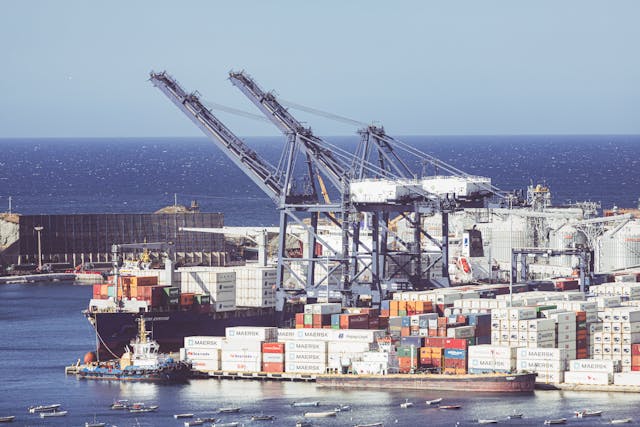
Gioia Tauro has long been considered one of the symbols of the lack of vision in Italian industrial and logistics policy.
Born in the 1970s as the industrial outlet of an iron and steel pole that never saw the light of day due to the crisis in the sector in the 1980s, it was reconverted into a freight port. Despite being the first Italian port in terms of cargo traffic and the ninth in Europe, this facility, which benefits from unique characteristics such as the natural depth of its waters thanks to which there are no size limits for berthing and such as its strategic position in the Mediterranean basin, could potentially become the most important hub in the Mediterranean.
Finally, also in the perspective of the development of our south as a ‘strategic hub’ of all the routes that cross the Mediterranean, with the Meloni government, concrete investments are being made in this strategic port.
The President of the Council herself, on the occasion of the signing of the Agreement for the Development and Cohesion Fund 2021-2027, emphasised that’ the port of Gioia Tauro is a jewel, the first Italian port and the ninth in Europe for goods traffic. But we are a platform in the middle of the Mediterranean, that sea which is the point of contact between the Indo-Pacific and the Atlantic. We are in the middle, with a port at the tip of this platform. So ninth place in Europe is not the maximum objective to which we can aspire, reiterating the need for long-term projects and vision for the relaunch of our southern region.
The signing between Prime Minister Giorgia Meloni and Calabria governor Roberto Occhiuto concerned the tenth Cohesion Policy agreement financed with FSC resources for the 2021-2027 period. It envisages a total amount of 2.863 billion, gross of the 300 million envisaged for the bridge over the Strait, for a total of 317 projects, it is the ‘largest amount allocated so far, on the basis of project priorities proposed by the Region and shared by the government,’ Minister Fitto pointed out.
And that the Meloni government believes in the Gioia Tauro project is demonstrated by the recent G7 Commerce, which took place in Calabria in Villa San Giovanni.
One of the focal points of the meetings held was precisely that of favouring the central role of the port of Gioia Tauro in the agreements. ‘The government wants to enhance the port of Gioia Tauro and we have thought of a large hub to collect energy supplies to be distributed to the EU,’ stressed Minister Tajani, who represented Italy.
And the resources made available will be used precisely to build the infrastructure that is currently absent in the port basin and indispensable for Gioia Tauro to be truly competitive with facilities such as Rotterdam.
This also includes the Bridge over the Strait of Messina, a work that, in addition to allowing a change of speed in the island’s trade, envisages a series of logistical infrastructures that also involve the port of Gioia Tauro.
Recent difficulties in the supply chain have necessitated a rethink, especially due to the difficulties generated by the war in Ukraine and the ongoing attempts to hinder maritime trade in the Black Sea, along with the persistent Houthi attacks against commercial vessels in the Red Sea and Gulf of Aden.
Strengthening the resilience of supply chains, it should be remembered, is not only about reducing risks, but also exploiting opportunities to improve efficiency and foster innovation. This requires investment in advanced technologies, diversification of sources and increased cross-sectoral collaboration. Fundamentally, it implies a deeper collaboration between governments and businesses, based on cooperation and mutual trust.
And Gioia Tauro fits into this new vision, in a strategy for the revitalisation of Southern Italy that seems to finally see the light.
Fe.Mo.



 Subscribe
Subscribe